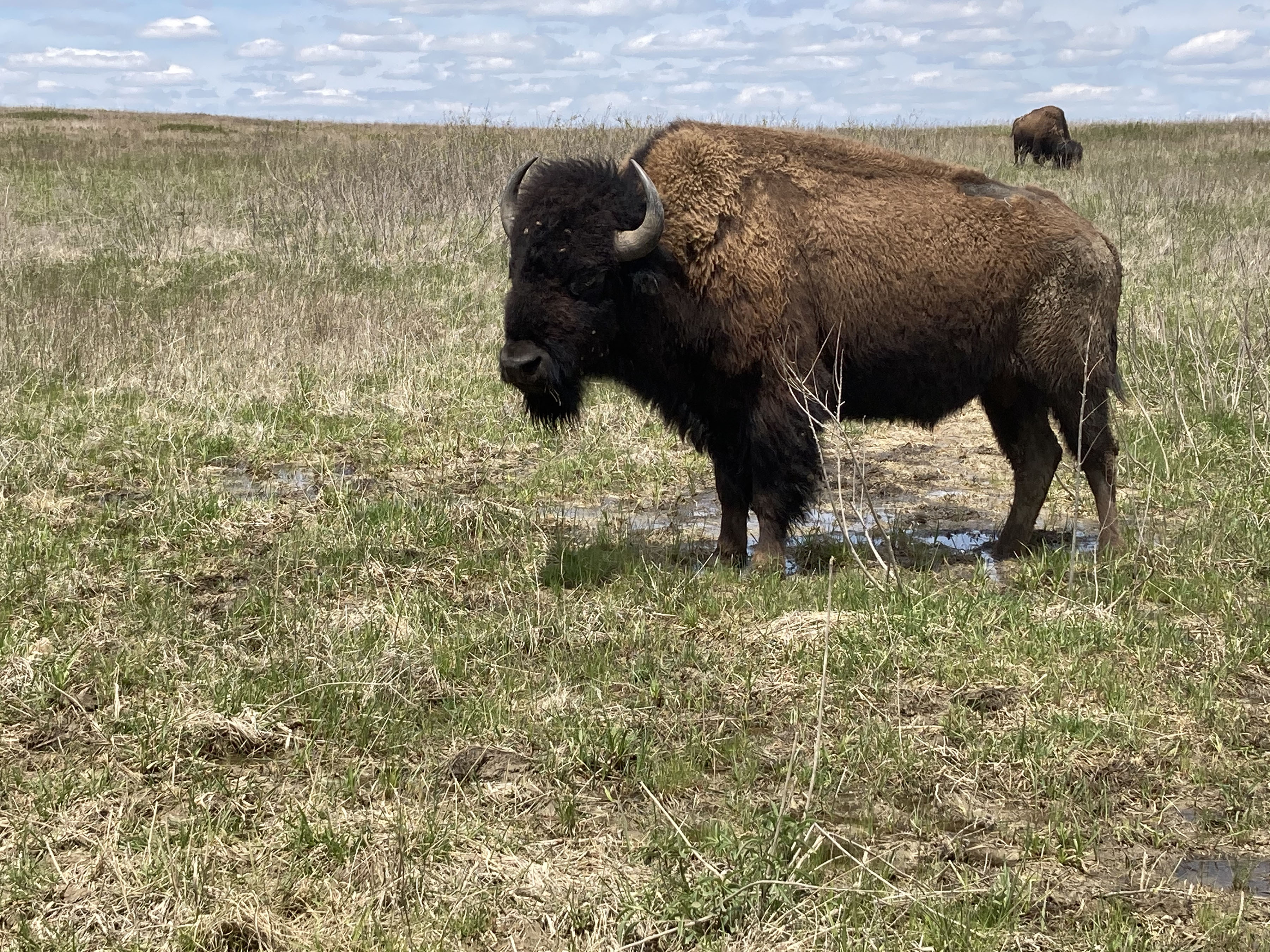Resource Library
Plant of the Week: Buffalo in Arkansas
Buffalo, or bison as correctly called, have always fascinated me. One of my earliest childhood memories is going in the north pasture to gather in the cows for their evening milking and stopping to look for tadpoles in the water-filled buffalo wallows. As a 6-year-old farm boy, I knew none of the tragic tale of the buffalo and how its destruction shaped the fate of so many lives in middle America.
We call them buffalo because the French trappers used the word “boeuf” to describe them. That word translates to “ox” in English, a big-shouldered breed of cattle used to pull wagons and plows. Our American buffalo is an Asian immigrant. It is only distantly related to water buffalo, but they do share a common ancestor in the distant past.
Bison migrated to North America sometime in the past 200,000 years when ice was piled deep across the landscape and the Bering Land Bridge was high and dry. They ranged across all of North America and as far south as Central America before Europeans arrived, but their largest numbers were always in the open grasslands of the Great Plains. Estimates of numbers are all over the place, but an average figure of 60 to 80 million animals is probably close.
DeSoto and his merry band encountered buffalo in the 1540s, as did the survivors of the LaSalle expedition as they made their way across the southern part of present-day Arkansas in the 1680s, seeking out the Mississippi River and a ride back to France.
William Dunbar, tasked by Thomas Jefferson to explore the Ouachita River into the newly acquired Louisiana Purchase, made his way to Hot Springs in December 1804 and spoke of the abundance of turkey, deer and buffalo. Their firearms worked great for the deer and turkey, but all they managed to do was wound three buffalo, following them until the trail gave out. Henry Schoolcraft and Thomas Nuttall visited different parts of Arkansas between 1818 and 1820 and commented on the abundance of elk, bear, deer, turkeys and buffalo. When Nuttall visited the Grand Prairie in 1818, buffalo were no longer found there, being replaced by the nearly wild cattle of the early settlers.
Colonel Richard Dodge (1827 – 1895), one of three Dodges who served at Fort Dodge in south-central Kansas and the one who selected the nearby townsite for Dodge City, had served in the Army in the American West since 1851 and had had a number of postings throughout the region. He was a prolific chronicler of his experiences and reported in one of his memoirs that once in the late 1860s he crossed through a massive buffalo herd during a 25-mile ride through Arkansas. Sometimes there were small bands of animals, other times massive herds, but buffalo were never out of sight.
Dodge served under General Sherman, the man Lincoln sent to Atlanta to quell the rebellion during the Civil War. Sherman and the top military and political brass of the time had a simple but brutal solution to the “Indian Problem.” Kill the buffalo and starve the Plains Indians into submission. A few soldiers in scattered Western forts could never accomplish this but the arrival of the Transcontinental Railway in 1869 and the proliferation of railways across the Great Plains lead to an orgy of senseless slaughter that is mind-numbing to consider.
Within five years the great herd had been split in half. By 1880 the southern herd was destroyed; by 1890 only about 540 buffalo remained. Cormac McCarthy’s 1985 Blood Meridian, the best book I’ve ever read, sweeps to conclusion on the grasslands of Kansas as the bone pickers gather the skeletons of this once enormous herd to convert into fertilizer.
This is a sad and depressing tale, but every year I try to make it to the Nature Conservancy’s 45,000 acres Tallgrass Prairie Preserve north of Pawhuska, Oklahoma, for a spiritual reacquaintance with these magnificent animals. Their herd of 2500 animals range freely on the open prairie and give us a glimpse of what once was.
For more information about horticulture or to see other Plant of the Week columns, visit Extension’s Website, www.uaex.uada.edu, or contact your county extension agent. The Cooperative Extension Service is part of the U of A Division of Agriculture.
